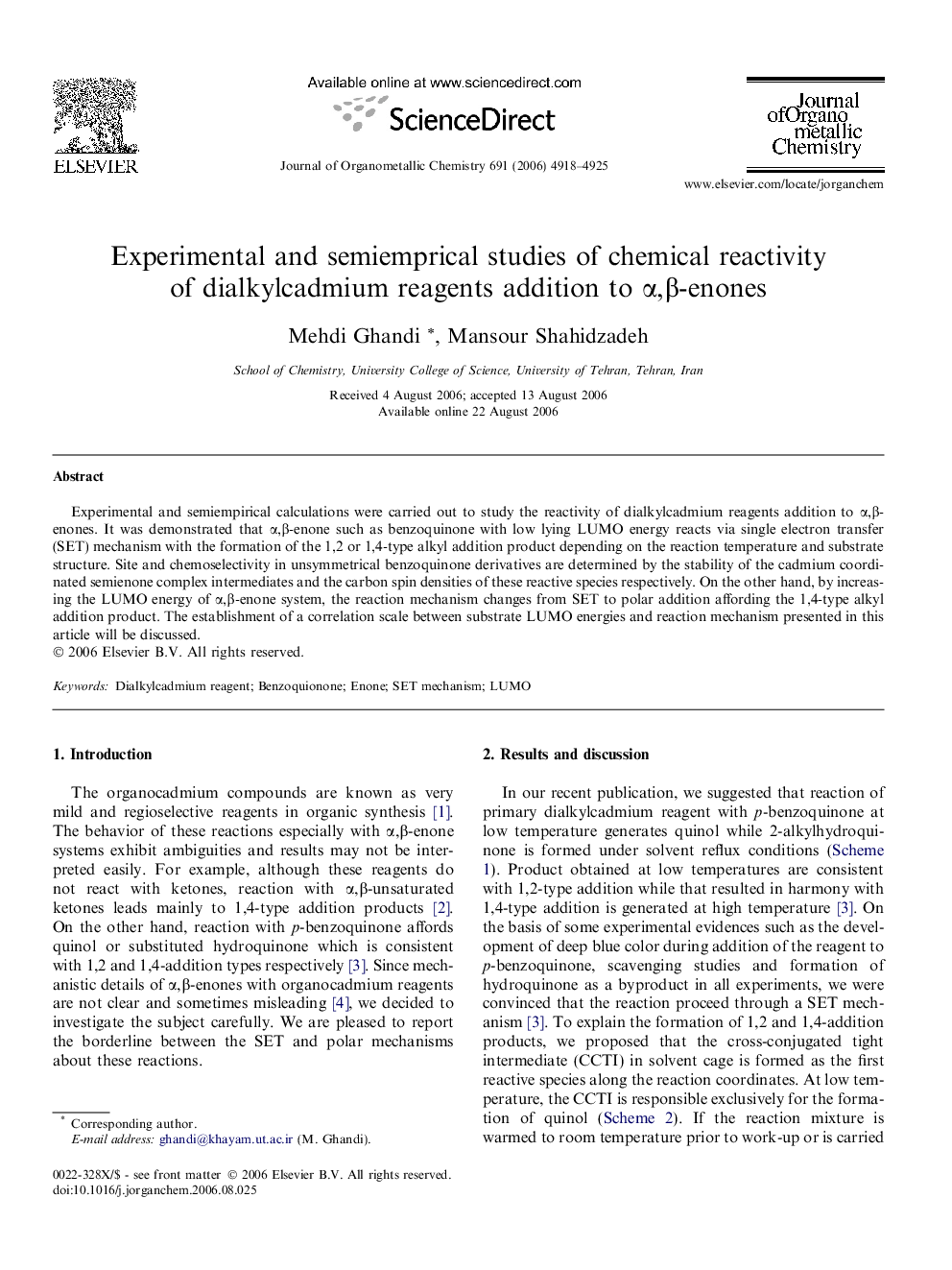| کد مقاله | کد نشریه | سال انتشار | مقاله انگلیسی | نسخه تمام متن |
|---|---|---|---|---|
| 1328446 | 977574 | 2006 | 8 صفحه PDF | دانلود رایگان |

Experimental and semiempirical calculations were carried out to study the reactivity of dialkylcadmium reagents addition to α,β-enones. It was demonstrated that α,β-enone such as benzoquinone with low lying LUMO energy reacts via single electron transfer (SET) mechanism with the formation of the 1,2 or 1,4-type alkyl addition product depending on the reaction temperature and substrate structure. Site and chemoselectivity in unsymmetrical benzoquinone derivatives are determined by the stability of the cadmium coordinated semienone complex intermediates and the carbon spin densities of these reactive species respectively. On the other hand, by increasing the LUMO energy of α,β-enone system, the reaction mechanism changes from SET to polar addition affording the 1,4-type alkyl addition product. The establishment of a correlation scale between substrate LUMO energies and reaction mechanism presented in this article will be discussed.
The establishment of a correlation scale between the substrate LUMO energy and the reactivity including addition type and mechanism either a single electron transfer (SET) or a polar in addition reaction of dialkylcadmium reagent to α,β-enone system will be presented in this article.Figure optionsDownload as PowerPoint slide
Journal: Journal of Organometallic Chemistry - Volume 691, Issue 23, 15 November 2006, Pages 4918–4925